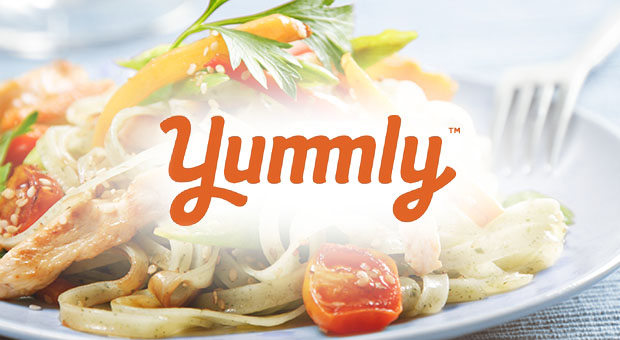Yummly is a new player poised to steal the foodies from Pinterest. There are some key differences between Pinterest and Yummly that may influence where brands spend their time and their money.
Yummly is a new player poised to steal the foodies from Pinterest. There are some key differences between Pinterest and Yummly that may influence where brands spend their time and their money.
Food continues to be one of the hottest topics for pins on Pinterest, and food brands and publishers like Kraft Recipes, Goya Foods and Food Network have all jumped aboard the Pinterest train looking to drive brand awareness and traffic back to recipes nested on their brand’s website.
Meanwhile other image sharing and aggregation sites have begun to emerge. Yummly was launched in 2010, but it had some strong players back the site last year. Unilever saw enough promise in the startup to become an investor in Yummly’s Series A funding round and is one of the site’s main advertisers.
Differences Between Pinterest and Yummly for Brands
Promoted Pins: A major frustration for brands is the lack of advertising opportunities available in the form of promoted pins on Pinterest.
Metrics: Brands accustomed to the analytics provided by Facebook Insights and YouTube Insights continue to struggle with the lack of metrics available from Pinterest.
Accounts: Both brands and people create similar accounts (though brand accounts can now be verified Twitter-style). Other than verification, there is no difference in available features between an individual user’s Pinterest account and a brand’s Pinterest account.
Driving traffic: While Pinterest has been a great source of traffic for brands, users have to click twice on a pin to be directed to an image’s source page. There is no prompt to drive users to the pin’s originating source.
Search: Brands have experimented with using hashtags, keywords and other ways to ensure their content ranks high in a Pinterest search. However, Pinterest search lacks the ability for user’s to narrow their search.
Recently unveiled verified brand accounts have helped users distinguish branded accounts from those created by fans. Do a Pinterest search for “Martha Stewart” and you will see why this was a necessary move.
Sharing: This is where Pinterest excels. One click repinning exposes content to the pinners follower. Users can also view the pins and profiles of other Pinterest users/brands to discover additional content to share. Pinterest is also designed to be a destination, rather than a tool.
Yummly
Promoted Recipes: Yummly allows brands to advertise in the form of Promoted Recipes. These recipes, such as the one shown below for a Skippy peanut butter chicken recipe (Skippy is a Unilever brand) found in a search for “chicken”, rank higher than other recipes to ensure maximum visibility in Yummly search.
Advertising- Suggested Products: When a user searches for a specific recipe, they will be shown a list of suggested products that match the ingredient list of the recipe they were searching for. For instance, a search of Kraft prompts an ad for I Can’t Believe It’s Not Butter, another Unilever brand. Clicking on the ad drives the user to the product website.
Metrics: Flightpath contacted Yummly to inquire about brand analytics. According to a Yummly rep, they are starting to offer analytics for brand partners.
Accounts: Branded accounts house all recipes generated from a publisher or brand. Accounts also exist for food bloggers who supply content to the site.
Driving Traffic: Prompts for users to read full recipes and visit publisher’s website are prominent, a call to action that does not exist on Pinterest.
Search: Yummly offers users incredibly relevant results due to its semantic search engine. Users can also narrow their search using the prominent search tools on the left hand side of the site. Yummly’s focus on food is also a plus. A search for chicken on Pinterest pulled up chicken recipes alongside a chicken coop and Pedigree’s new chicken flavored dog food.
Sharing: When users click “Yum” this action is shared to their Facebook wall. Users can also see how many “Yums” different recipes have, which serves as an endorsement of the recipe. All images are sized to be pinnable via the Pinterest bookmarklet. However there is no social sharing within the platform itself. Unlike Pinterest which is designed to be a social destination, Yummly is a tool for finding recipes and sharing them on other social platforms.
Since the Pinterest craze hit over a year ago, frustration among brands at Pinterest’s lack of promotional opportunities has been building. Why Pinterest didn’t see this void as a dangerous opportunity for a startup to charge in and steal brand dollars is a mystery, but that startup has arrived in the food and beverage category and it is Yummly.



